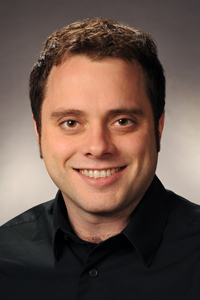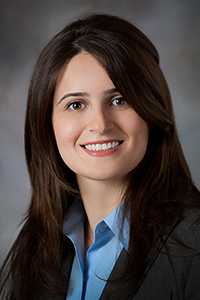
Iowa State University civil engineering and aerospace engineering researchers partner to improve a structure’s resiliency to wind hazards.
Iowa State recently received a 3-year, $400,000 National Science Foundation (NSF) grant that focuses on the development of high-performance structural control systems for wind response mitigation. The multidisciplinary research team comprises Simon Laflamme, the project’s principal investigator and assistant professor of civil, construction and environmental engineering (CCEE); CCEE Assistant Professor Alice Alipour; and Partha Sarkar, professor of aerospace engineering (AerE).

Laflamme builds upon work from a previous NSF grant, where he developed a semi-active structural damping system that is electronically controlled and reduces building movements. The project’s goals are to justify implementation of such high-performance damping systems for buildings prone to high-wind events and establish design procedures enabling their integration directly during the structural design process. “By giving structural designers tools to accommodate these advanced damping devices within structural systems, we will see a growing number of their implementations, which will produce more resilient structures,” Laflamme said.
Each researcher brings crucial work to form procedures that engineers may use in current and new building design. “Our study will allow the structural design community to design safer structures that meet the serviceability requirements,” Alipour said.

Alipour will conduct a study that considers regional probability of high wind events, probability of failure of structures in high-wind events, initial cost of building construction, and maintenance costs throughout a building’s life – with and without semi-active damping systems. “We hope that our findings will justify initial investments to deploy damping systems that mitigate wind hazards and provide more resilient structures,” Alipour said.
Sarkar will conduct dynamic tests using geometrically scaled models of tall buildings in different types of winds, such as those produced in hurricanes, thunderstorms, tornadoes, downbursts and gust fronts to assess the wind loads on these buildings and their response to these different wind types. Researchers also will study the effects of geometric properties, like building shapes and heights, on the aerodynamic loads. Researchers will conduct these tests in Iowa State’s Aerodynamic Atmospheric Boundary Layer Wind and Gust Tunnel, Tornado Simulator, Microburst Simulator, and aeroelastic load simulator. An aeroelastic simulator is commonly used to determine motion-induced aerodynamic loads on civil structures, such as long-span bridges, and aeronautical structures, such as airplane wings.
“Until now, building design standards and codes only account for straight-line winds,” Sarkar said. “This research will create a methodology to consider other wind hazards, like tornadoes, that pose a finite risk to large cities, particularly those located in the tornado alley.”
To learn more about Laflamme’s and Alipour’s research, visit http://www.ccee.iastate.edu/research/structures.
To learn more about Sarkar’s research visit http://www.aere.iastate.edu/department-overview/faculty/partha-sarkar.